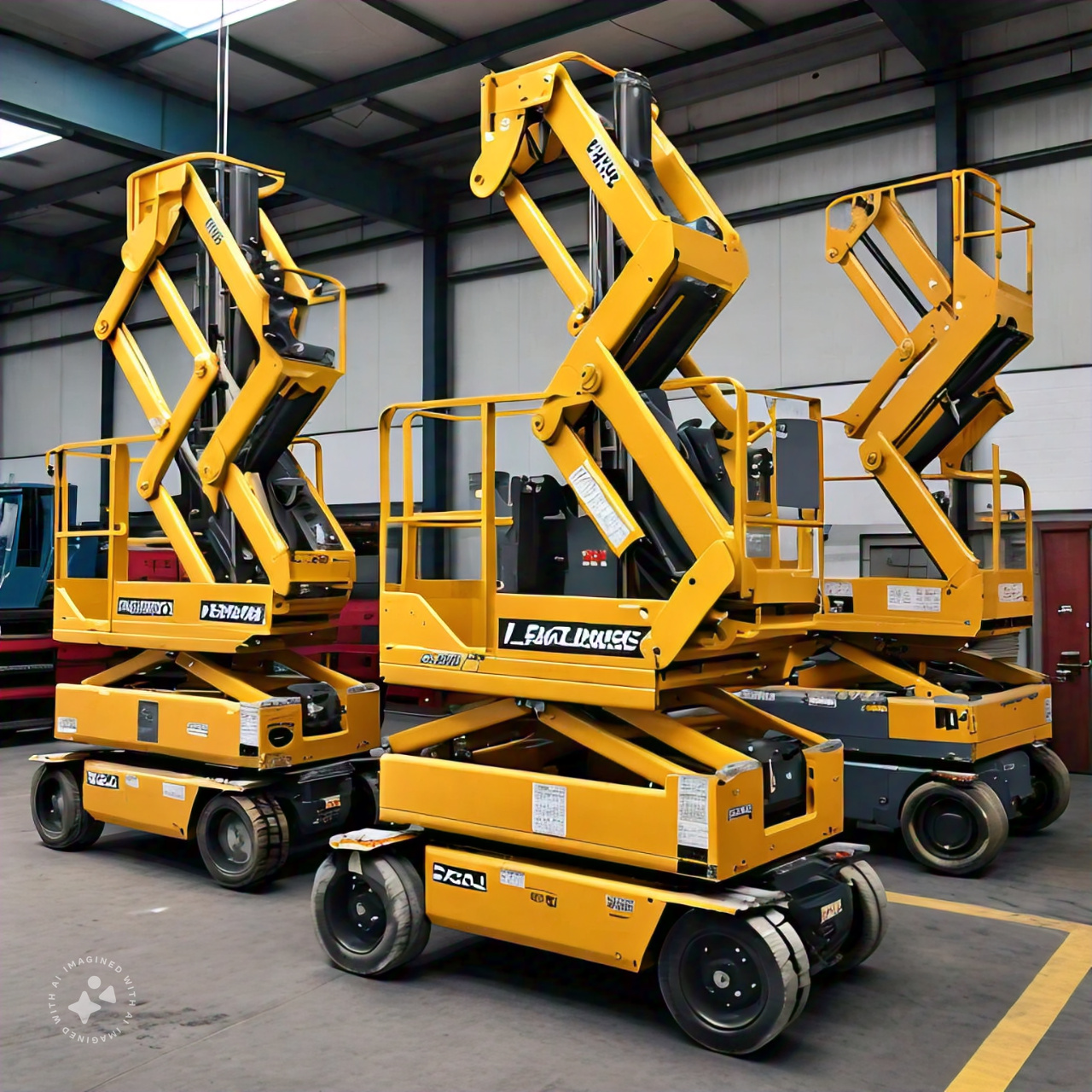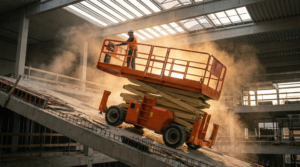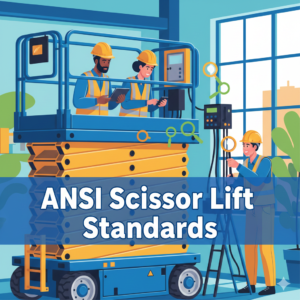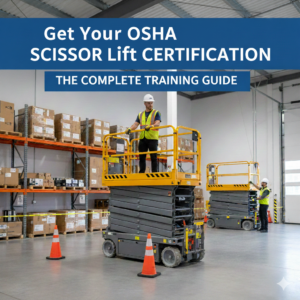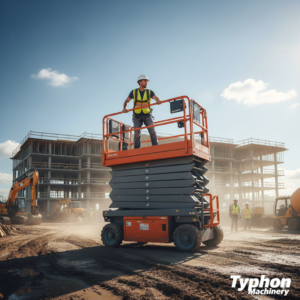Essential tools for workers reaching high areas in warehouses, building sites, and more are scissor lifts. Scissor lifts come in five flavors: hydraulic, diesel, electric, rough terrain, and pneumatic. Although many scissor lifts work similarly, you should choose the appropriate one for your job.
An aerial lift, or scissor lift, offers workers a secure, consistent enclosure and a rising platform to enable them to do exact tasks at great heights. A scissor lift is a kind of construction lift designed for machines with a platform to raise goods and persons to high locations. Though there are some important variations between them, construction lifts include many varieties of scissor lifts and boom lifts. For jobs where height is not a factor, a scissor lift is a more logical and reasonably priced choice, as it can raise many personnel at once while just moving up and down. Fuel type, use, and size differ across scissor lifts. On the workplace, these are the five primary forms of scissor lifts observed.
Table of Contents
- Hydraulic Scissor Lifts
- Diesel Scissor Lifts
- Electric Scissor Lifts
- Rough Terrain Scissor Lifts
- Pneumatic Scissor Lifts
- Scissor Lift FAQ
Hydraulic Scissor Lifts
Either hand-operated or engine-driven hydraulic systems run hydraulic scissor lifts. The hydraulic oil’s fluctuating pressure in the machine facilitates lift operation and platform movement down and up. A hydraulic scissor lift is a straightforward choice when you have lifting demands, as users are not obliged to undergo much training since it is really easy to operate.
Hydraulic scissor lifts are much slower in colder conditions as oil becomes more viscous at lower temperatures. Although more recent versions have solved this problem, hydraulic scissor lifts are usually suitable for applications where horsepower and speed are not top concerns.
Diesel Scissor Lifts
On building projects, diesel scissor lifts are among the most often utilized ones. With its trademark cross-braced structure, they can climb 30 feet; advanced versions stretch as high as 60 feet.
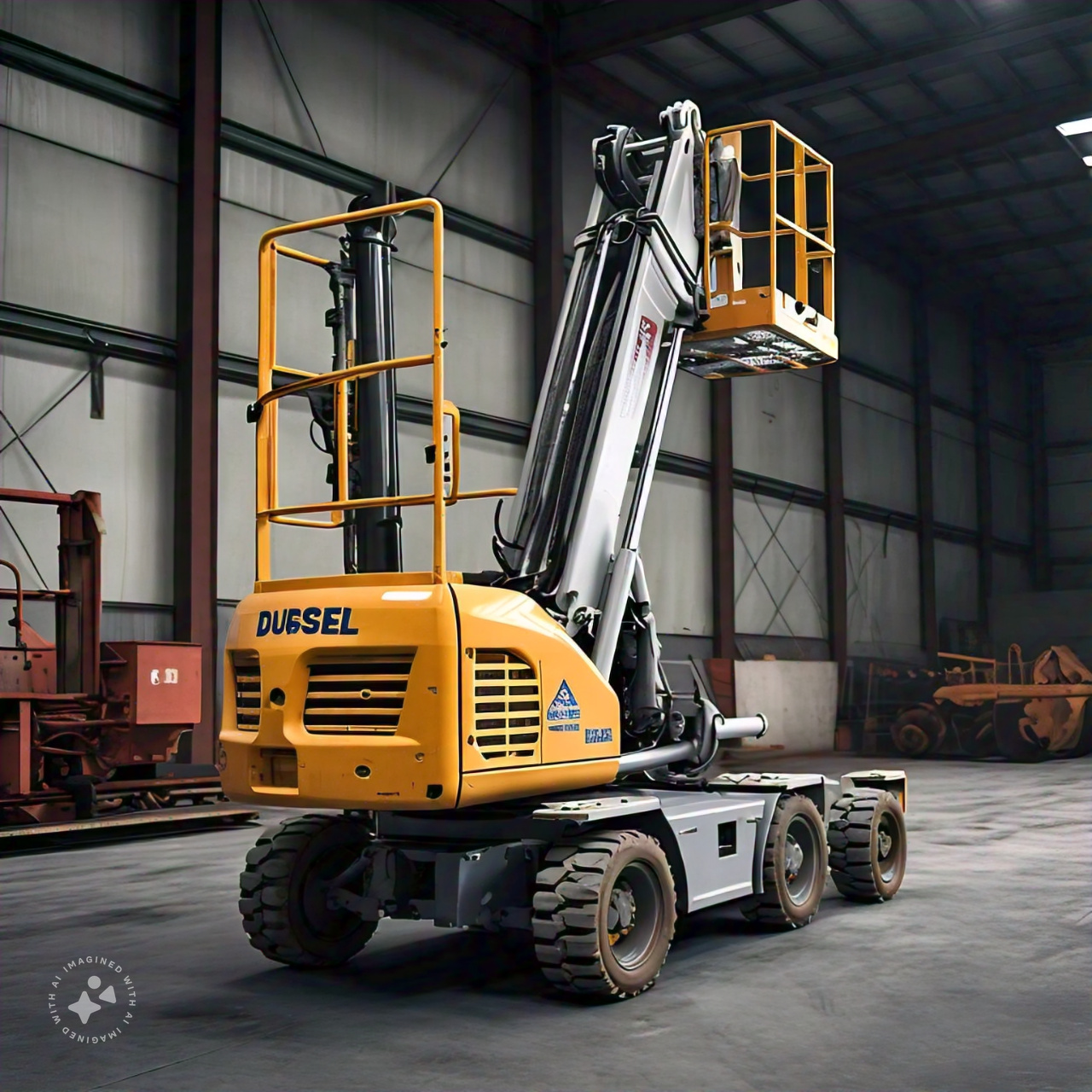
These elevators are loud and spew emissions into the surroundings as diesel fuel runs them. They are therefore saved for outside building sites or places where ventilation exists and noise may be released. Their big aerial platform comes from their heavy design as well.
Electric Scissor Lifts
Another often used aerial platform equipment are electric scissor lifts. An electric scissor lift uses a quiet, powered motor system instead of burning fuel. Electric scissor lifts provide a better answer for inside environments, which sometimes lack enough ventilation, as they do not produce fumes or noise. These machines are best for smaller areas as they are also less heavy than their diesel equivalents.
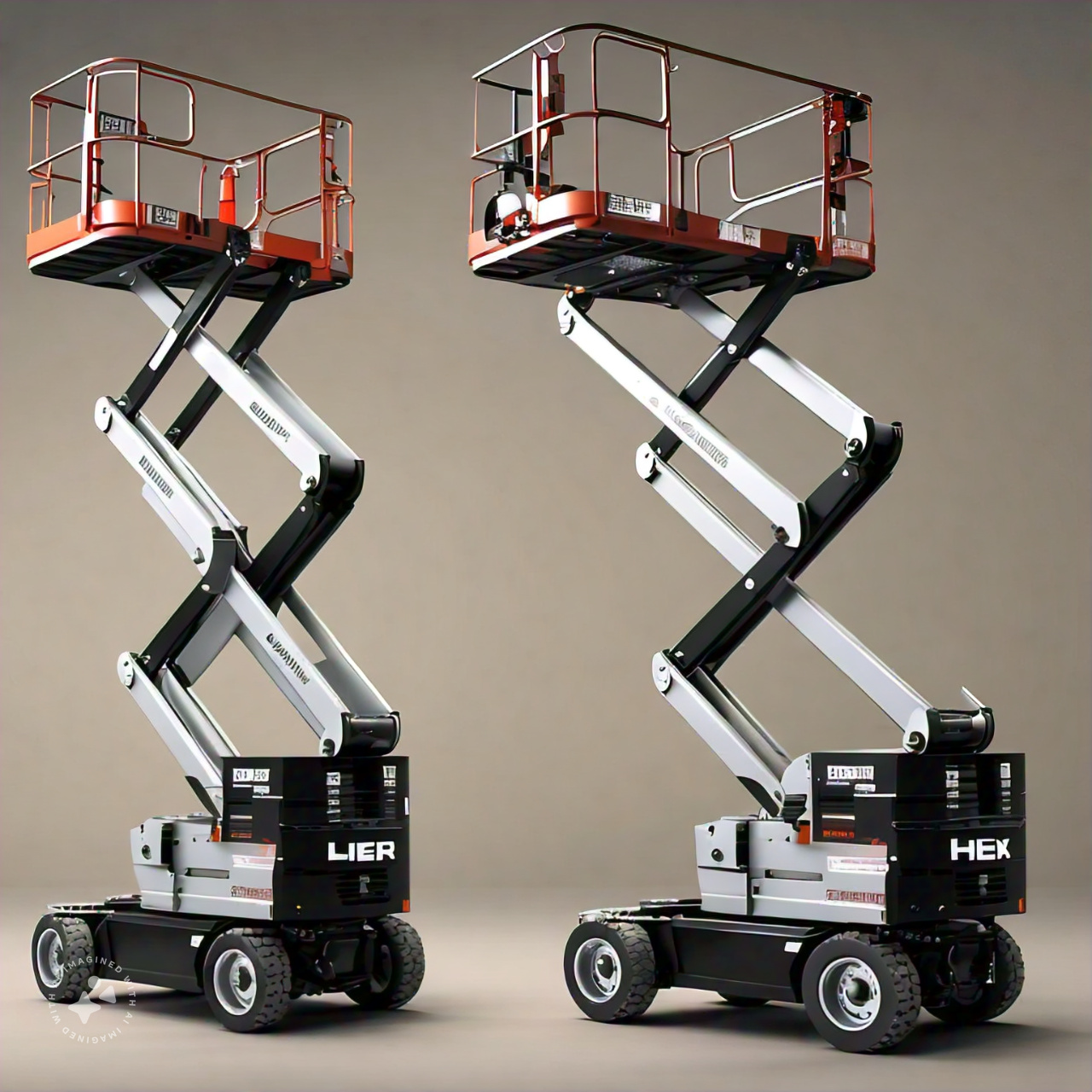
Rough Terrain Scissor Lifts
Additionally made only for outdoor terrain are rough terrain scissor lifts. They have heavy-duty tires, a high-weight capacity, and extra safety devices like arrestors and fall restraints. For projects in bad weather and construction locations with uneven terrain and slopes, they are thus perfect.
Rough terrain scissor lifts offer heights of up to 50 feet and widths of up to 10 feet. Diesel, gasoline, liquid propane, or dual fuel runs the equipment.
Pneumatic Scissor Lifts
Using air pressure as its lifting mechanism, pneumatic scissor lifts For businesses trying to reduce their carbon footprint, this lift is more sustainable than conventional lifts as it does not spew dangerous fumes or byproducts into the environment.
To raise and lower the platform, a pneumatic scissor lift vacuums and compresses atmospheric air. Although they lack fuel, they can not generate as much power as a rough terrain or diesel lift; still, the equipment may be utilized almost anywhere, including interior facilities.
Scissor Lift FAQ
Keep reading to get more information with the answers to these often asked questions, or review our free e-book guide if you are considering your choices and wondering whether a scissor lift is right for you.
What Is the Difference Between a Scissor Lift and a Boom Lift?
Seeing a scissor lift and a boom lift can help you quickly distinguish between them. For instance, although a boom lift may travel forward, backward, left, and right, a scissor lift platform only goes up and down. There are certain additional basic variations, however, that make one better for a career than the other and vice versa.
A scissor lift has:
- A more spacious platform
- The ability to only move vertically
- Better stability
- A higher weight capacity
- More uses in indoor tasks
A boom lift has:
- A smaller platform
- More precise maneuverability
- An extended arm reach
- A lower weight capacity
- More uses in outdoor tasks
How Do You Operate a Scissor Lift?
Although running a scissor lift is a simple chore, you should always get acquainted with all its settings and follow all safety procedures. Operating a scissor lift in six phases is broken down here in a brief overview:
- Familiarize yourself with the controls. Review the manufacturer’s guide and get acquainted with the model you are working on before you begin. Examine the control panel and note its many purposes, including those of the joystick and emergency stop buttons.
- Take safety precautions and conduct a safety test. Perform a safety check and don suitable safety gear. Verify the lift’s general state of operation. Tell a supervisor right away if you see leaks, breakdowns, or other damage. Should safety issues not exist, you might be free to go on working.
- Turn on the scissor lift. Disengage the emergency stop buttons to activate the controls.
- Position the scissor lift. You will have to turn on “drive mode” to properly position your scissor lift. Use the joystick to go forward, backwards, left, and right after the driving mode is activated.
- Situate the platform. Once you’re in the right region, turn off drive mode and use the joystick to vary its height. Before you start elevating the platform, look for any overhead impediments and mark where you should stop. Pull back on the joystick to raise the platform, then forward to drop it.
- Turn off the scissor lift when done. Make sure that the platform has been lowered to its lowest position after you complete using the lift, then activate any safety devices. The emergency stop button will let you securely close the elevator. Make sure you always plug it in to recharge or refuel it at the end of the day so it is ready for the next.
What are OSHA Standards for Operating a Scissor Lift?
The Occupational Safety and Health Administration Operating or working close to a scissor lift is clearly governed by (OSHA). Following the following scissor lift safety guidelines and recommendations falls within employers’ responsibility:
- Guardrails on scissors lifts help to stop falling.
- Make sure scissor lifts are steady and won’t topple over or collapse.
- The scissor lift should be positioned so that electrocution or crushing risks are avoided.
- Make sure the person gets electrical training if the employment calls for labor close to an electrical source.
- Employers have to routinely keep scissor lifts maintained to guarantee their safety.
- Companies have to provide employees instruction on safe working with or near scissor lifts.
For the most accurate and up-to-date information, check the OSHA website.
What Kind of Scissor Lift Do You Need for Your Project?
Satisfying your project requirements depends on selecting the correct scissor lift. Apart from the topographical conditions and power supply discussed in the scissor lift types, you need to additionally take into account elements such as weight of what you want to lift, lift strength and height, load stability, loading technique, and preferred platform size.
These elements interact and need to all be taken into account when choosing a scissor lift. See our advice on determining which scissor lift suits you for more details.

